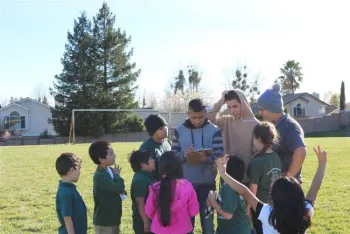Diego Mariscal, 4-H Community Education Specialist (position funded by Initiative)
Steven M. Worker, 4-H Youth Development Advisor
Stephanie Larson, County Director
County Portrait: There are over 92,000 youth in Sonoma County, with 37% identifying as Latino, 44% eligible for free and reduced-price meals, and 22% classified as English learners.

A particular strength were eight 4-H afterschool clubs, offering up to 75-hours of educational and athletic programs to youth at local elementary schools. Clubs focused on hands-on science, nutrition, leadership, and civics activities in addition to physical activity to promote healthy living. Programs included a strong teenagers-as-teachers component where teenagers were recruited and trained to facilitate activities. These long-term programs, particularly in comparison to short-term programs (e.g., less than 3 hours), supported tremendous outcomes and impacts. Youth increased their public speaking ability, science literacy, and reported healthier habits than before. Additionally, parents became much more invested in the 4-H program and began to lead expansion efforts. This will support long-term 4-H program sustainability.

Through our efforts, Sonoma 4-H increased the number of youth engaging in 4-H and developed new ways for youth to engage in 4-H programs. We strengthened our partnerships with local high schools and elementary schools, the Sonoma County Library, community centers, and the Boys and Girls Club.
The Sonoma County 4-H outreach approach focused more on long-term development of life skills for youth and volunteers, but while continuing short term experiences to improve brand awareness. We continued balancing this approach to recruit and cultivate more youth and adult volunteers to become invested in the 4-H program.

